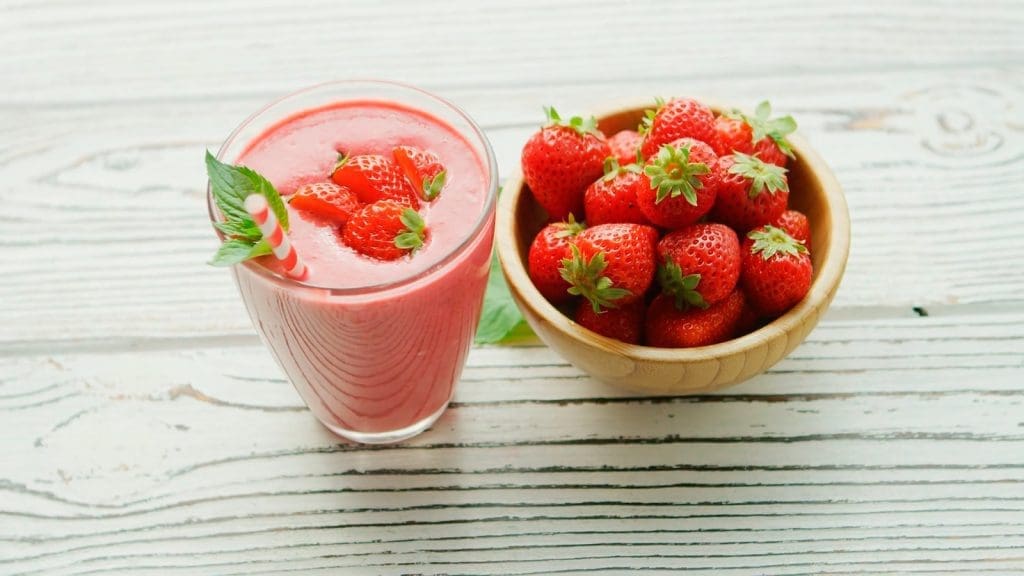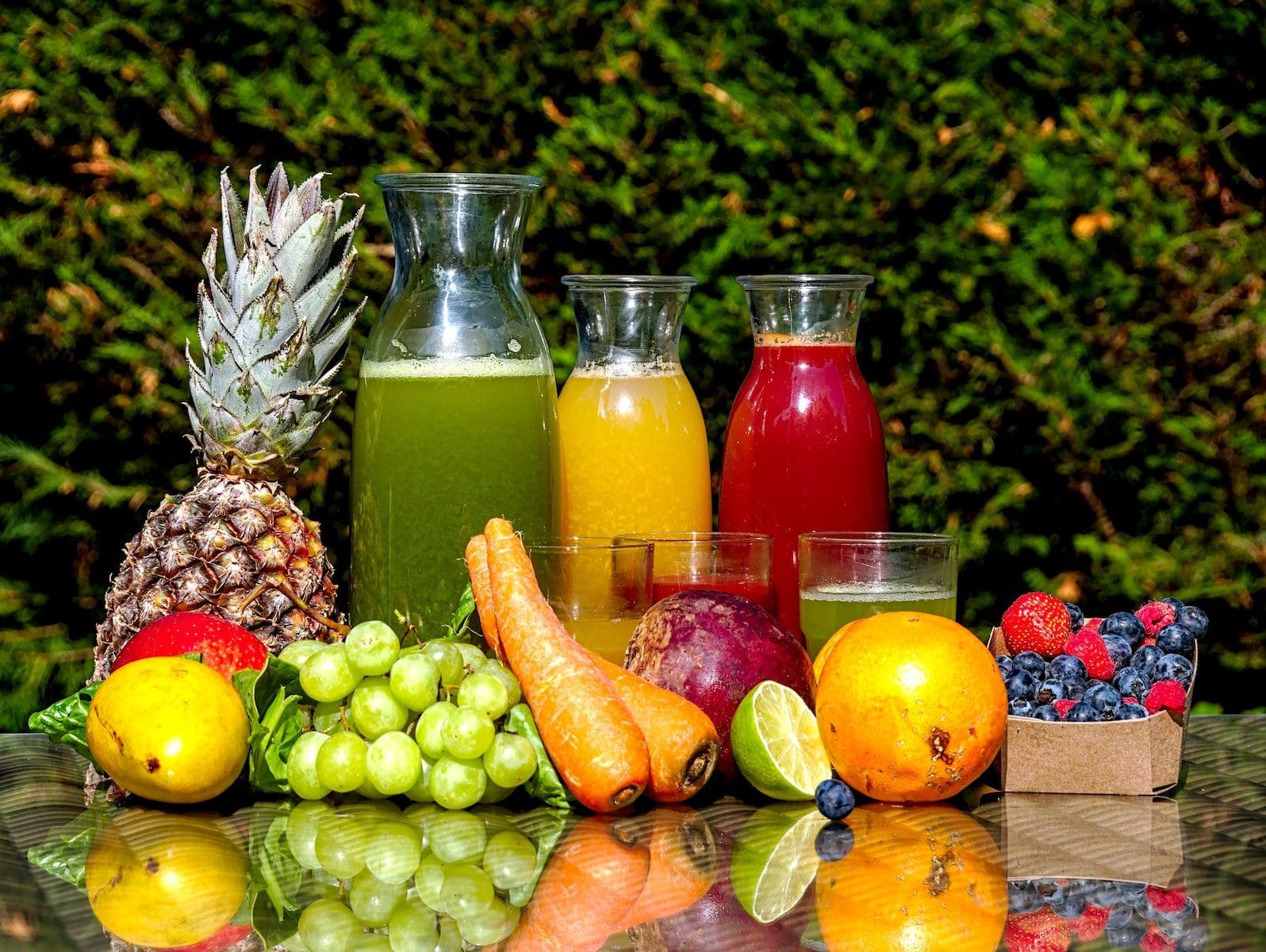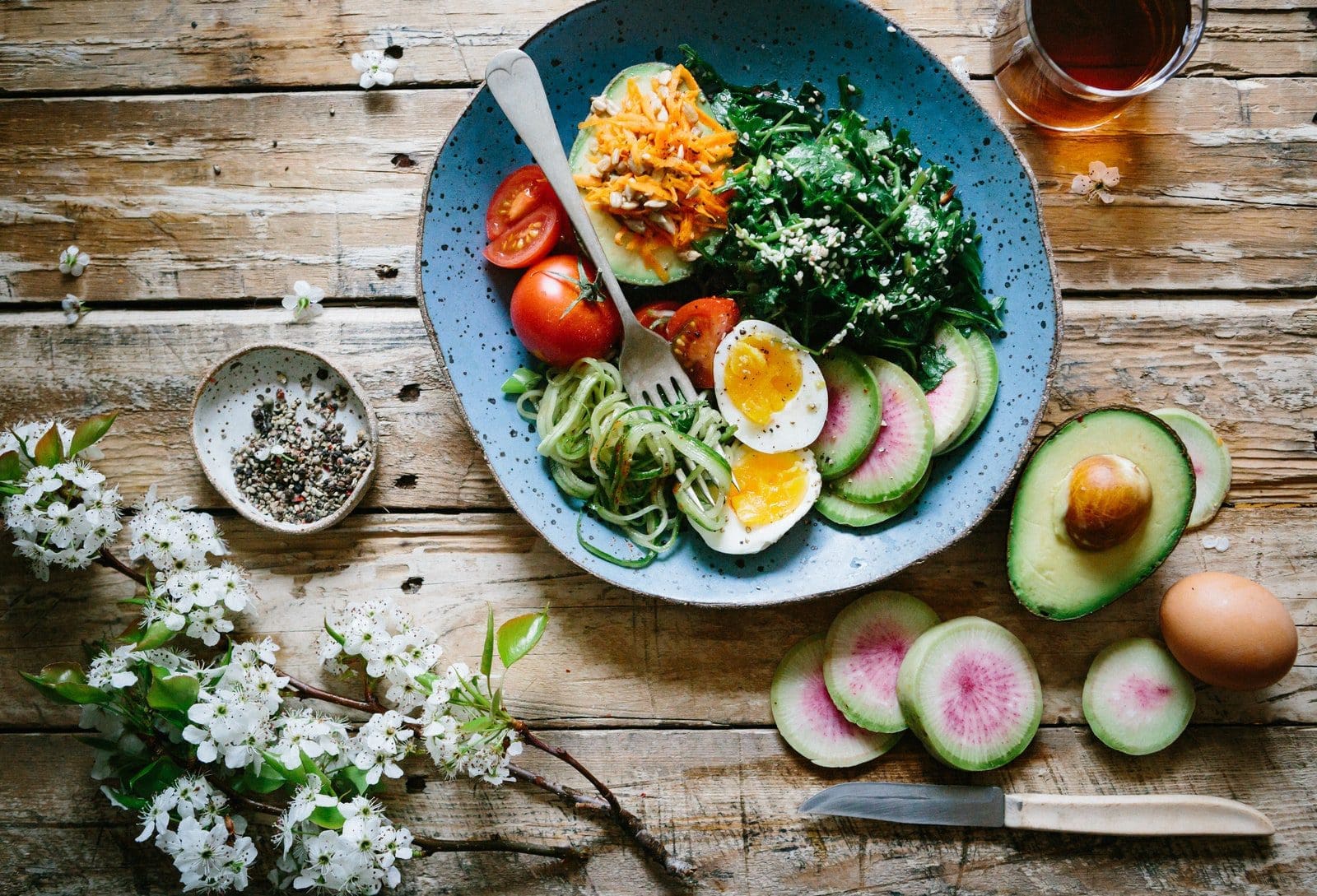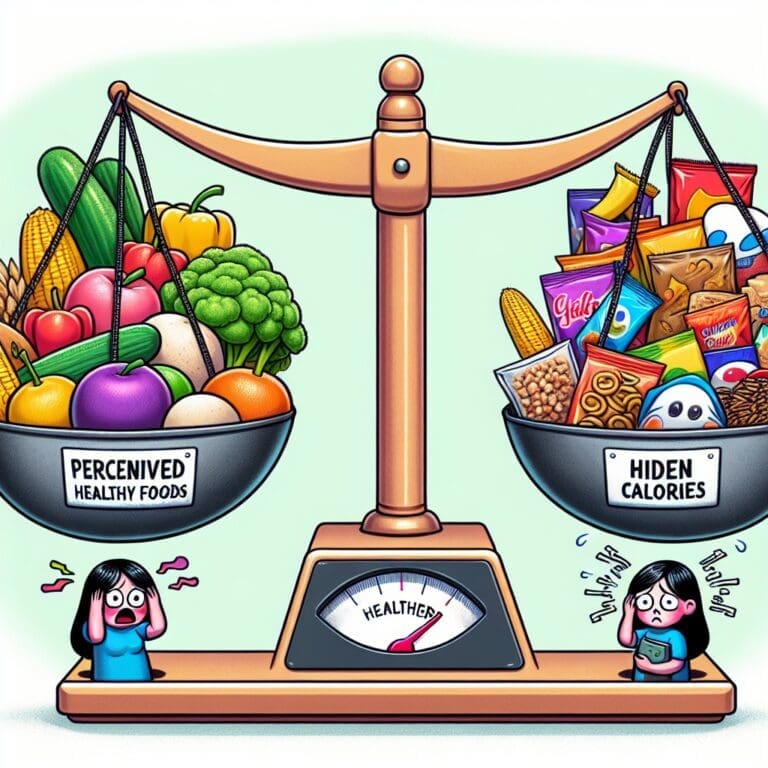How to do smoothie diet the right way?
The smoothie diet has become popular among those looking to lose weight. Full of essential nutrients and simple to make, smoothies provide a tasty and convenient way to cut down on calories without giving up flavor or nutrition.
Why Choose a Smoothie Diet?
Smoothies offer the perfect combination of deliciousness and healthiness. By substituting one or more meals with nutrient-packed smoothies, you can:
- Manage calorie intake: You can customize smoothies to be low in calories.
- Enhance nutrient absorption: Blending fruits and vegetables helps your body absorb vitamins and minerals better.
- Enjoy convenience: Quick preparation makes sticking to a healthy eating plan easy.
However, it’s important to remember that a one-week smoothie diet may not be enough for long-term weight loss or detoxification.
Key Takeaway
A well-planned smoothie diet can be an effective and enjoyable method for shedding pounds while nourishing your body with essential nutrients. You can create balanced meals that support your weight loss goals by incorporating a variety of whole foods like leafy greens, fruits, proteins, and healthy fats. For instance, adding some keto cookie dough bars as a snack could be a delicious way to maintain your energy levels while on this diet. Combining the smoothie diet with regular fitness activities can enhance your weight loss results.
Understanding the Smoothie Diet
Definition and Purpose of a Smoothie Diet
A smoothie diet primarily involves replacing one or more daily meals with nutrient-dense smoothies. These smoothies are carefully crafted to provide essential vitamins, minerals, fiber, and protein while maintaining a low-calorie count. The primary goal is to promote weight loss by reducing overall calorie intake without sacrificing nutrition.
Calorie Restriction and Weight Loss
Smoothies can help with calorie restriction in a few key ways:
- Portion Control: Each smoothie serving is typically pre-measured, making it easier to manage portion sizes and avoid overeating.
- Low-Calorie Ingredients: You can create satisfying yet low-calorie meals by choosing leafy greens, fruits, low-fat dairy or plant-based milk.
- Satiety: Adding ingredients such as protein (e.g., Greek yogurt) and healthy fats (e.g., avocado) helps keep you full longer, reducing the urge to snack between meals.
These strategies can also be beneficial when facing diet challenges, often making dieting hard and repetitive.

The Role of Nutrient Density
Nutrient density refers to the amount of nutrients per calorie in a food item. A successful smoothie diet relies on high-nutrient-dense foods to ensure your body gets all the essential nutrients, even with a restricted calorie intake.
Key aspects of nutrient-dense smoothies include:
- Leafy Greens: Spinach and kale contain vitamins A, C, K, iron, and fiber.
- Berries: Blueberries, strawberries, and raspberries offer antioxidants and vitamins with relatively low sugar content.
- Protein Sources: Greek yogurt or plant-based protein powders can enhance muscle repair and growth while keeping you full.
- Healthy Fats: Ingredients like flaxseeds or coconut oil contribute omega-3 fatty acids that support heart health.
Focusing on nutrient density aids in weight loss and supports overall health. This balanced approach ensures you’re cutting calories and effectively nourishing your body.
Benefits of Incorporating Smoothies into Your Diet
Nutrient-Packed Nature of Smoothies and Their Impact on Overall Health
Smoothies are a powerhouse of essential nutrients. By blending various fruits, vegetables, proteins, and healthy fats into one delicious drink, you can create a meal rich in vitamins, minerals, antioxidants, and fiber. This nutrient density can lead to:
- Improved immune function: A diet high in vitamins C and E, as found in many fruits and vegetables, can boost your immune system.
- Better skin health: Antioxidants like those found in berries help combat oxidative stress, promoting healthier skin.
- Enhanced energy levels: Nutrient-rich smoothies provide a sustained release of energy throughout the day.
Convenience and Ease of Preparation
One significant advantage of smoothies is their convenience. You can prepare a nutritious meal replacement with just a few minutes and a good blender. This ease of preparation makes adhering to a healthy eating plan simpler. Key points include:
- Quick to make: No need for elaborate cooking; chop, blend, and go.
- Portable: Ideal for busy lifestyles, you can take your smoothie on the go.
- Versatile: Easily customize your smoothie based on available ingredients and personal preferences.
Specific Benefits
Smoothies offer several specific health benefits that contribute to overall well-being:
- Improved DigestionBlending breaks down food into an easily digestible form, which can be gentler on your digestive system.
- Ingredients like yogurt or kefir provide probiotics that support gut health.
- Enhanced Nutrient AbsorptionSmoothies help your body absorb more nutrients efficiently due to the blending process.
- Pairing fruits with healthy fats (like avocado or coconut oil) can enhance the absorption of fat-soluble vitamins.
- Balanced Blood Sugar LevelsIncluding fiber-rich ingredients such as leafy greens and chia seeds helps regulate blood sugar spikes.
- Low-sugar fruits like berries are excellent choices for maintaining stable glucose levels.
By incorporating smoothies into your diet, you’re enjoying a delicious meal and reaping numerous health benefits that support long-term wellness goals. Moreover, if you’re considering fitness exercises while following a keto diet, or exploring the effectiveness of natural herbs for weight loss, these dietary changes could complement those efforts well. Additionally, if you’re curious about the differences between popular diets such as the Dukan diet and the keto diet, or seeking tips for effortless keto cooking, feel free to chat with Jen for personalized advice and insights.
lossdiet4u.com/importance-of-consulting-a-dietician). They can help tailor your diet plan based on your needs and goals.
Sample Meal Plan: A Day on the Smoothie Diet
Breakfast: Green Smoothie
Kickstart your day with a nutrient-packed green smoothie. This blend is rich in vitamins and minerals, providing a refreshing and energizing start to your morning.
Ingredients:
- 1 cup kale (stems removed)
- 1 banana
- 1 cup almond milk (unsweetened)
- 1 tablespoon chia seeds (optional for extra fiber)
- Ice cubes (optional)
Instructions:
- Add kale, banana, and almond milk to your blender.
- Blend until smooth.
- For a thicker consistency, add ice cubes and blend again.
- Optional: Stir in chia seeds for added fiber.
Lunch: Berry Smoothie
Enjoy a delicious, satisfying berry smoothie packed with antioxidants for lunch. This recipe combines mixed berries, spinach, and Greek yogurt, ensuring you stay full and nourished throughout the afternoon.
Ingredients:
- 1 cup mixed berries (blueberries, strawberries, raspberries)
- 1 cup spinach
- 1/2 cup Greek yogurt
- 1/2 cup water or almond milk
- 1 tablespoon honey (optional)
Instructions:
- Combine mixed berries, spinach, Greek yogurt, and liquid of choice in your blender.
- Blend until smooth.
- Sweeten with honey if desired.
Dinner: Sweet Potato Smoothie
A sweet potato smoothie provides a comforting yet nutritious dinner option. This unique blend is infused with cinnamon for a delightful flavor profile.
Ingredients:
- 1 medium sweet potato (cooked and cooled)
- 1 teaspoon cinnamon
- 1 cup almond milk
- 1 tablespoon maple syrup (optional)
Instructions:
- Bake or boil the sweet potato until tender, then let it cool.
- Add the sweet potato, cinnamon, almond milk, and maple syrup to your blender.
- Blend until creamy.
- Serve chilled or slightly warm based on preference.
These smoothie recipes keep you full and energized throughout the day while effectively supporting your health goals. If you’re looking to revamp your eating habits with the smoothie diet or explore other low-carb recipes, such as delicious keto main dishes, there are plenty of options available to suit your taste buds while maintaining your health goals. Adopting a low-carb lifestyle can provide numerous health benefits and aid in weight loss.
Recommended Blenders for Making Perfect Smoothies at Home
Exploring Different Blender Options
When starting your smoothie diet journey, having the right blender can make a big difference. Here are some popular options that cater to different needs and budgets:
1. Vitamix
Vitamix blenders are known for their powerful performance. Their strong motors can blend even the toughest ingredients into a creamy, smooth texture, making them perfect for making nutrient-rich smoothies packed with fiber from fruits and vegetables.
- Key Features:
- Variable speed control for precise blending.
- Durable stainless steel blades.
- Self-cleaning function.
Vitamix review: Users often praise its versatility and long-lasting performance, although it has a higher price tag.
2. Nutribullet
Nutribullet offers a compact and affordable solution without compromising on quality. It’s perfect for those who need a quick, efficient way to prepare smoothies without taking up too much kitchen space.
- Key Features:
- Simple, one-touch operation.
- Portable cups for on-the-go convenience.
- Powerful motor within a small footprint.
Nutribullet review: Many appreciate its ease of use and portability, making it a favorite among busy individuals.
3. Blendtec
Blendtec blenders are known for their powerful motors, which allow them to handle tough ingredients effortlessly. They excel at creating smooth textures and can easily handle ice and frozen fruits.
- Key Features:
- Pre-programmed settings for various recipes.
- Robust stainless steel blades.
- Unique WildSide jar design for better blending efficiency.
Blendtec review: Users highlight its incredible power and efficiency, although some find it noisier than other models.
4. Ninja
Ninja blenders combine versatility with robust performance. Equipped with multiple attachments, they can perform tasks beyond just blending smoothies, such as chopping and food processing.
- Key Features:
- Multiple blades for different functions.
- High-speed crushing capabilities.
- Interchangeable attachments, including personal-sized cups.
Ninja review: Praised for its multifunctionality, the Ninja is an excellent choice for those looking to get more out of their blender than just smoothies.
Choosing the right blender depends on whether you need a high-performance, compact size, powerful motors, or multi-functionality blender. Each brand has unique features designed to enhance your smoothie-making experience.
Experimenting with Unique Smoothie Recipes for Variety in Your Diet
Smoothies are a fantastic way to incorporate a variety of nutrients into your diet. They can be sweet, savory, or even a meal replacement. Here are some unique smoothie recipes that you can try.
Blueberry Muffin Smoothie
Start your day with a smoothie that tastes like a treat! The Blueberry Muffin Smoothie combines the sweet and tangy flavors of blueberries with the creamy texture of oats and bananas.
Ingredients:
- 1 cup blueberries (fresh or frozen)
- 1 ripe banana
- 1/2 cup oats
- 1 cup almond milk
- 1/2 cup Greek yogurt
- 1 tsp vanilla extract
Instructions:
- Add all ingredients to your blender (Vitamix, Nutribullet, Blendtec, or Ninja).
- Blend until smooth and creamy.
- Pour into a glass and enjoy immediately.
This smoothie is packed with antioxidants from the blueberries and protein from the Greek yogurt, making it delicious and nutritious. If you’re following a low-carb diet, you could also consider using keto-friendly ingredients.
Spinach and Avocado Smoothie
For a green powerhouse, try the Spinach and Avocado Smoothie. This blend offers a creamy texture thanks to the avocado while delivering a hefty dose of vitamins from spinach.
Ingredients:
- 2 cups fresh spinach
- 1/2 avocado
- 1 apple, cored and chopped
- 1 cup coconut water or almond milk
- Juice of half a lemon
Instructions:
- Place the spinach, avocado, apple, coconut water (or almond milk), and lemon juice in your blender.
- Blend until smooth.
- Serve chilled.
This smoothie supports digestion and keeps you full longer due to the healthy fats in avocado.
Creamy Tomato Soup Smoothie
The Creamy Tomato Soup Smoothie is an excellent dinner alternative for those who prefer savory over sweet. This unique recipe combines the freshness of tomatoes with the warmth of cinnamon.
Ingredients:
- 2 ripe tomatoes, chopped
- 1 small sweet potato, cooked and peeled
- 1 cup vegetable broth
- 1/4 cup almond milk
- 1 tsp ground cinnamon
Instructions:
- Combine all ingredients in your blender.
- Blend until smooth.
- Heat in a pot if you prefer it warm, or enjoy it cold as a gazpacho-style soup.
This savory smoothie is perfect for dinner, offering comfort without compromising nutrients.
Experimenting with these unique recipes helps keep your smoothie diet exciting and prevents monotony. By using different blenders, such as Vitamix (known for high performance), Nutribullet (compact yet efficient), Blendtec (powerful motor), or Ninja (versatile with various attachments), you can achieve the perfect consistency every time.
If you’re looking for more ideas on how to incorporate smoothies into your weight loss journey, check out these healthy smoothie recipes for weight loss.
Tips for Success on Your Smoothie Diet Journey
Starting a smoothie diet can be an exhilarating experience, filled with the promise of health and vitality. Here are some tips to ensure you get the most out of your smoothie diet journey:
Incorporate Essential Nutrients
To make sure your smoothies are not just delicious but also nutritionally balanced, consider these key components:
- Leafy Greens: Adding kale, spinach, or Swiss chard provides essential vitamins and minerals.
- Fruits: Choose low-sugar fruits like berries, which are high in antioxidants, or bananas for their natural sweetness.
- Protein Sources: Greek yogurt, nut butter, or protein powder can help keep you feeling full longer.
- Healthy Fats: Ingredients like avocado or coconut oil add creaminess and help with nutrient absorption.
- Liquids: Almond milk, coconut water, or plain water can provide consistency without adding unnecessary calories.
Experiment with Flavors and Textures
A smoothie diet should never feel monotonous. Keep things exciting by trying new combinations and textures:
- Sweet vs Savory: While fruit-based smoothies are popular, don’t avoid savory options like a creamy tomato soup smoothie.
- Texture Play: Add ingredients like oats for a thicker texture or chia seeds for a bit of crunch.
- Spices and Herbs: Boost flavor with cinnamon, ginger, mint, or basil. These not only enhance taste but also offer additional health benefits.
Practical Tips
Making your smoothie diet successful involves more than just recipes—it’s about habits:
- Prep Ahead: Pre-cut fruits and veggies and store them in the freezer. This makes morning prep quick and easy.
- Stay Hydrated: Drink plenty of water throughout the day to help with digestion and overall well-being.
- Listen to Your Body: How different ingredients make you feel. Customize your smoothies to suit your nutritional needs and taste preferences.
By focusing on these aspects, you can ensure your smoothie diet remains enjoyable and effective.
Common Mistakes to Avoid When Following a Smoothie Diet
Mistakes can derail your smoothie diet progress. Here are some common smoothie diet mistakes to watch out for:
Insufficient Protein or Fiber Intake
Protein and fiber are crucial for keeping you full and energized. Skipping these can lead to hunger or fatigue.
- Add Greek yogurt, nut butter, or protein powder to your smoothies for a protein boost.
- Include chia seeds, flaxseeds, or oats to increase fiber content.
Overloading on Fruit
While fruits are nutritious, using too many can spike your blood sugar levels.
- Balance fruits with leafy greens like spinach or kale.
- Opt for low-sugar fruits such as berries instead of high-sugar options like mangoes.
Using Pre-Packaged Mixes
Pre-packaged mixes may contain added sugars and preservatives.
- Choose fresh, whole ingredients to ensure maximum nutrient intake.
- Read labels carefully if you must use pre-packaged items.
Ignoring Healthy Fats
Healthy fats help with satiety and nutrient absorption.
- Include avocado, coconut oil, or nuts in your smoothies for a creamy texture and longer-lasting fullness.
Neglecting Hydration
Smoothies alone might not meet all your hydration needs.
- Drink plenty of water throughout the day.
- Add hydrating ingredients like coconut water or cucumber to your smoothies.
Not Monitoring Carb Intake
It’s easy to overlook the carbohydrate content in your smoothies, especially when loading up on fruits. This can hinder your weight loss goals. To avoid this pitfall, you might want to consider upping your goals with a carb manager. A popular mobile application that helps individuals track their carbohydrate intake and manage their health goals could be beneficial in this regard.
Avoiding these mistakes can set you up for success on your smoothie diet journey.
Real-Life Success Stories from People Who Have Tried the Smoothie Diet
Sarah’s Journey: Shed Pounds and Boosted Digestion
Sarah started her smoothie diet journey to lose weight and improve her digestive health. In just one month, she lost 10 pounds by replacing two meals a day with smoothies packed with nutrients. One of her favorite recipes included:
- Green Smoothie: Kale, banana, almond milk, and a scoop of protein powder.
“I felt lighter and more energetic every day,” Sarah shares. “My digestion improved significantly, and I no longer experienced bloating after meals.”
Mike’s Transformation: Increased Energy Levels
The smoothie diet made a huge difference in Mike’s energy levels. As a busy professional, he often felt tired in the afternoons. By adding smoothies to his daily routine, he noticed an immediate increase in energy. His go-to smoothie was:
- Berry Smoothie: Mixed berries, spinach, Greek yogurt, and chia seeds.
“Switching to smoothies gave me sustained energy throughout the day,” Mike explains. “I felt more alert and focused at work.”
Emily’s Health Overhaul: Improved Overall Well-being
Emily wanted to improve her health, so she tried the smoothie diet. She loved getting creative with different ingredients to keep things exciting. One of her favorite combinations was:
- Sweet Potato Smoothie: Sweet potato, cinnamon, almond milk, and a dash of nutmeg.
“I loved how versatile the smoothie diet was,” Emily remarks. “It helped me lose weight, improved my skin complexion, and balanced my blood sugar levels.”
These real-life success stories show the positive impact of adopting a smoothie diet. By focusing on nutrient-rich ingredients and enjoying delicious recipes, you can achieve remarkable results on your path to better health.

Conclusion
Starting a smoothie diet can greatly improve your health and well-being. To make the most of it, you must balance cutting calories with getting enough nutrients. Using a wide range of fresh, top-quality ingredients, you can make tasty and filling meal replacements.
Key points to remember:
- Use high-performance blenders like Vitamix or affordable options like Nutribullet.
- Choose nutrient-dense ingredients: leafy greens, antioxidant-rich fruits, protein sources, and healthy fats.
- Avoid processed mixes; focus on whole foods for maximum benefits.
Following these guidelines will help make your smoothie diet effective and enjoyable.
FAQs (Frequently Asked Questions)
What is a smoothie diet?
A smoothie diet involves replacing one or more meals with nutrient-packed smoothies that promote calorie restriction and weight loss. It focuses on meal replacement smoothies that are rich in essential nutrients.
What are the benefits of incorporating smoothies into my diet?
Smoothies offer numerous benefits, including improved digestion, enhanced nutrient absorption, and balanced blood sugar levels. They are convenient and easy to prepare, making maintaining a healthy eating plan easier.
How do I get started with a smoothie diet?
To start a smoothie diet, invest in a high-quality blender for optimal texture and consistency. Choose fresh, high-quality ingredients free from additives. Avoid common pitfalls like relying too heavily on pre-packaged mixes.
What ingredients should I include in my smoothies?
Key ingredients for delicious and nutritious smoothies include leafy greens (like kale or spinach), low-sugar fruits (such as berries or bananas), protein sources (like Greek yogurt or nut butter), and healthy fats (like avocado or coconut oil).
What are some common mistakes to avoid when following a smoothie diet?
Common mistakes include insufficient protein or fiber intake, which can lead to feelings of hunger or fatigue. It’s important to ensure your smoothies are balanced meals on their own.
Can you provide examples of smoothie recipes for weight loss?
Sure! Try a Green Smoothie with kale, banana, and almond milk for breakfast. Enjoy a Berry Smoothie with mixed berries, spinach, and Greek yogurt for lunch. Consider a Sweet Potato Smoothie with sweet potato, cinnamon, and almond milk for dinner.









Comments are closed.